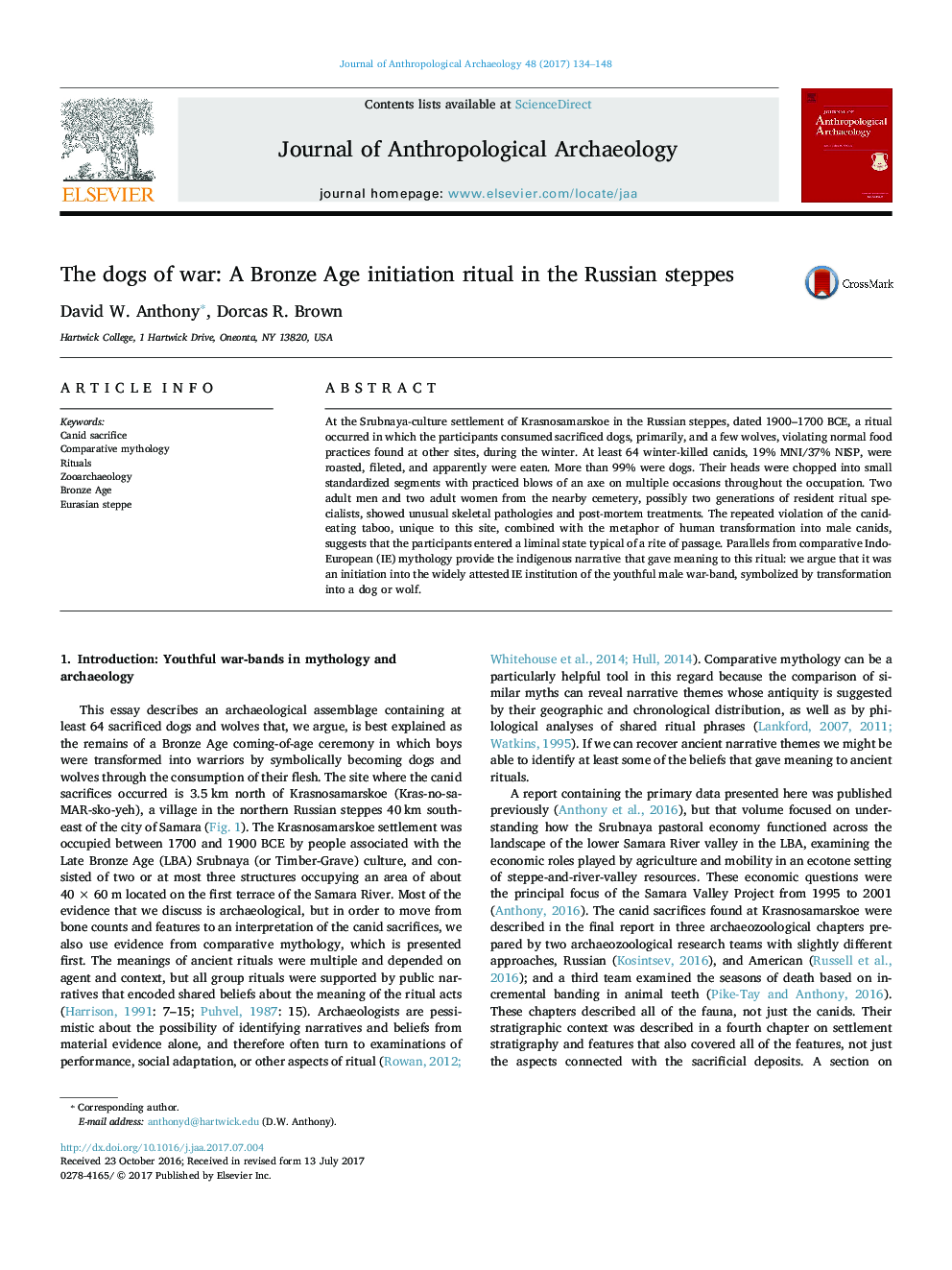| Article ID | Journal | Published Year | Pages | File Type |
|---|---|---|---|---|
| 5111902 | Journal of Anthropological Archaeology | 2017 | 15 Pages |
Abstract
At the Srubnaya-culture settlement of Krasnosamarskoe in the Russian steppes, dated 1900-1700 BCE, a ritual occurred in which the participants consumed sacrificed dogs, primarily, and a few wolves, violating normal food practices found at other sites, during the winter. At least 64 winter-killed canids, 19% MNI/37% NISP, were roasted, fileted, and apparently were eaten. More than 99% were dogs. Their heads were chopped into small standardized segments with practiced blows of an axe on multiple occasions throughout the occupation. Two adult men and two adult women from the nearby cemetery, possibly two generations of resident ritual specialists, showed unusual skeletal pathologies and post-mortem treatments. The repeated violation of the canid-eating taboo, unique to this site, combined with the metaphor of human transformation into male canids, suggests that the participants entered a liminal state typical of a rite of passage. Parallels from comparative Indo-European (IE) mythology provide the indigenous narrative that gave meaning to this ritual: we argue that it was an initiation into the widely attested IE institution of the youthful male war-band, symbolized by transformation into a dog or wolf.
Keywords
Related Topics
Social Sciences and Humanities
Arts and Humanities
History
Authors
David W. Anthony, Dorcas R. Brown,
